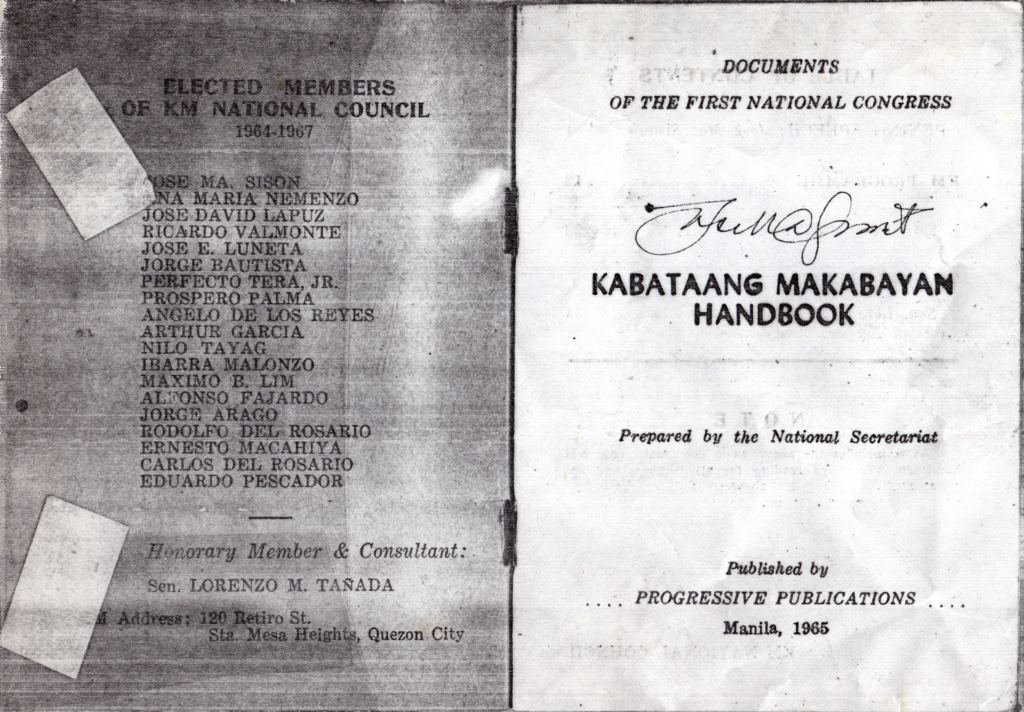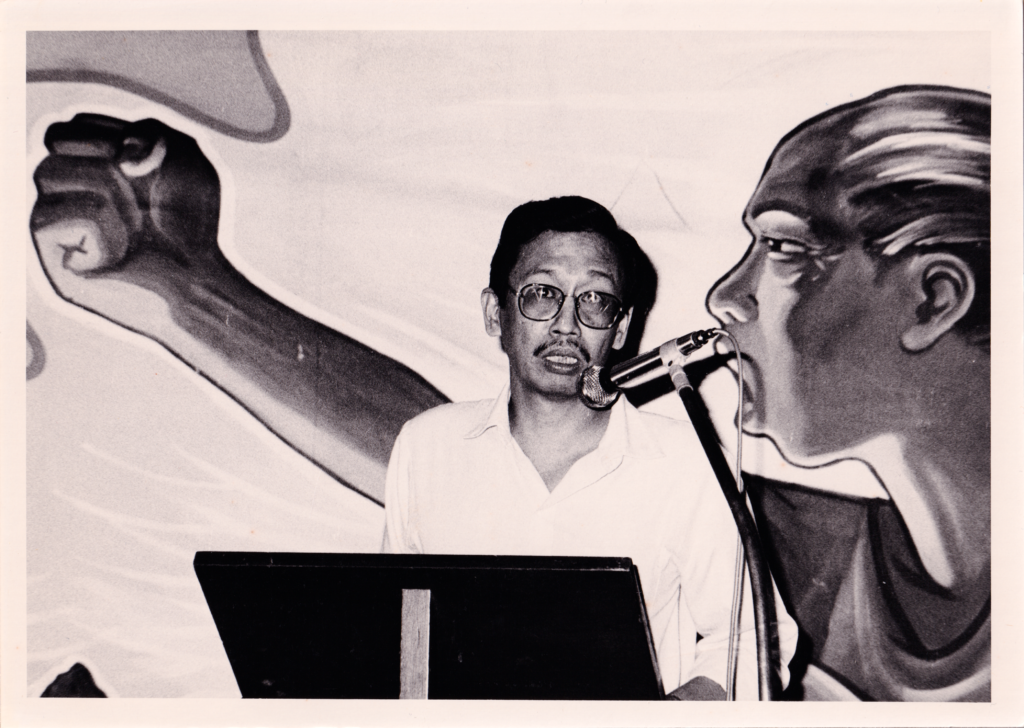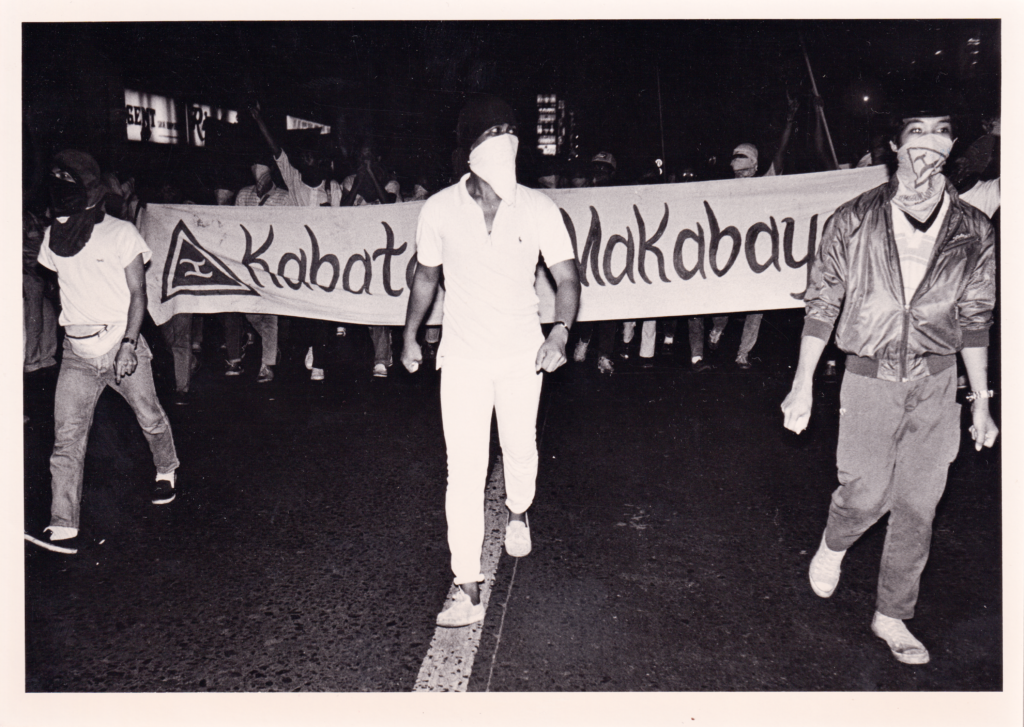The Jose Maria Sison Legacy Foundation presents an exhibit of archival materials from Ka Joma’s life that contribute to the history of Kabataang Makabayan. The following exhibit text is accompanied by some of the records on display during the exhibit.

The story of the Filipino people’s struggle for national and social liberation has always owed a great debt to militant and progressive-minded youth. It was youth like Andres Bonifacio, Emilio Jacinto, and Gregorio del Pilar who led the Katipunan in the unfinished 1896 revolution against the Spanish colonizers. It was youth like Liliosa Hilao, Edgar Jopson, Emmanuel Lacaba, Lean Alejandro, and Lorena Barros who stood up to the US-backed dictatorship of Ferdinand Marcos, Sr. Like generations before them, today’s youth are actively fighting for a better world through a wide range of forms, from the legal democratic movement to the armed struggle in the countryside. These youth endure state-sponsored attacks and repression, yet steadfastly continue to carry forward the struggle for freedom and justice. Among the youth who have served the people as Red fighters, many have made the ultimate sacrifice, including such martyrs as Kamil “Ka Alex” Manangan, Graiela Mae “Ka Alena” Pacaldo, Josephine “Ka Ella” Lapira, Wendell “Ka Waquin/Wanda” Gumban, Joy “Ka Kyrie” Mercado, and many more.
Integral to the history of revolutionary youth in the Philippines is Kabataang Makabayan (KM) [Patriotic Youth], founded by a 25-year-old Jose Maria Sison and a group of 80 like-minded young people on November 30, 1964, a date chosen for its symbolic resonance as the birthday of Bonifacio. That decision was a deliberate statement, emphasizing KM’s rightful place in continuing the militant tradition of patriotic and revolutionary Filipino youth. Predating both the re-established Communist Party of the Philippines and the National Democratic Front of the Philippines, KM was the seed from which the revolutionary spirit of the Filipino people was reinvigorated and reborn after the general decline of the movement for genuine independence caused by errors made by the old party under Lava leadership.
KM was built on the wave of righteous anger of youth and students in the Philippines against US imperialism, wars of aggression, poverty and inequality, and local reactionary tyranny. In their thousands, youth spilled out from their campuses, workplaces, and communities to link up with trade union activism, peasant organizing for land reform, and other struggles of the broad masses. Under the flag of KM the spirit of dissent and rebellion that swept the country was harnessed and given discipline and purpose. Notable among KM’s efforts in this period was their spearheading of the First Quarter Storm, a series of protests in the first quarter of 1970 which significantly expanded and consolidated the national democratic movement. When Marcos, Sr. declared martial law in 1972 and KM was driven underground, droves of youths flooded the countryside, taking up arms to join the highest form of revolutionary struggle.

Throughout this heightened period Jose Maria Sison was prolific in providing articles, essays, and speeches that served as the framework and guide for the generation of activists who were expanding their national democratic consciousness. It was during this time that Sison penned the writings that would become the foundation of the national democratic struggle, such as those compiled in the volume Struggle for National Democracy, the definitive text of the burgeoning movement.
For this exhibit, the Jose Maria Sison Legacy Foundation has opened up the archives of Jose Maria Sison and Julieta de Lima to present some of Sison’s writings that formed an integral part of the history of Kabataang Makabayan and of the revolutionary movement as a whole. The exhibit items showcase Sison’s courage, perceptiveness, and resolve within a social environment that one can draw parallels with that of today. In the current period of rectification within the revolutionary movement, we hope that they can inspire current and future generations to face our contemporary society’s problems as he and many others did 60 years ago.

This exhibit is available to view during the third NDFP international theoretical conference on national liberation from imperialism, 29-30 November, 2024. To inquire about viewing the exhibit please email jms.foundation@proton.me.
